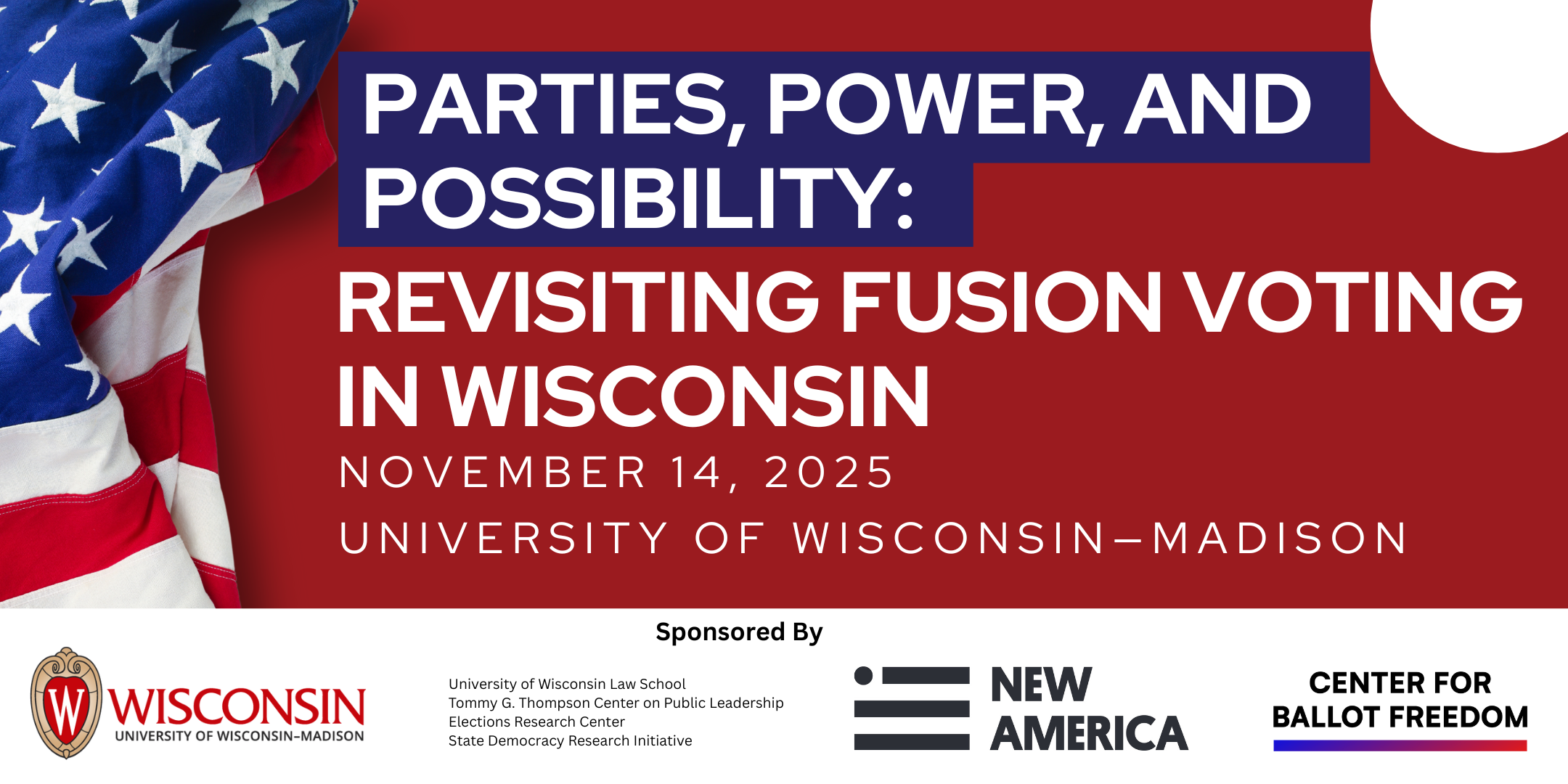
Madison, Wis. – “Parties, Power, and Possibility: Revisiting Fusion Voting in Wisconsin” will feature nearly 20 scholars, legal experts, party leaders and civic practitioners from across the country at the University of Wisconsin on Nov. 14, 2025.
This timely daylong event will explore the history, legal implications, and potential impact of fusion voting, as well as its relevance to the current political landscape. It is presented by University of Wisconsin Law School, the Tommy G. Thompson Center on Public Leadership, the Elections Research Center, State Democracy Research Initiative, Center for Ballot Freedom and New America.
As Wisconsin courts consider whether to lift the state’s ban on fusion voting, cross-partisan panels will examine: the function of political parties in democracy; the history and current landscape of fusion voting; legal and practical considerations for reform; and the implications for Wisconsin and beyond.
Fusion voting refers to a process for voting where more than one political party can nominate the same candidate on the ballot. This allows voters to vote for their preferred candidate on the ballot line that most aligns with their values. Typically, a minor party and major party “fuse” together to cross-nominate and support the same candidate. A candidate’s vote total is the sum of the votes they received on each of their nominating party’s lines. Fusion was once common, and is still in effect in some states, but was banned in others, including Wisconsin, in 1897.
In April, a cross-partisan coalition called United Wisconsin filed a lawsuit in Dane County seeking to allow fusion voting again to “promote legislation and candidates for public office that will advance cooperation across political party lines, compromise and problem-solving.”Registration is required for the free event, which will run from 9 a.m. to 3:30 p.m. at the Pyle Center, 702 Langdon St.
Submitted by Law School News on October 6, 2025
This article appears in the categories: Features